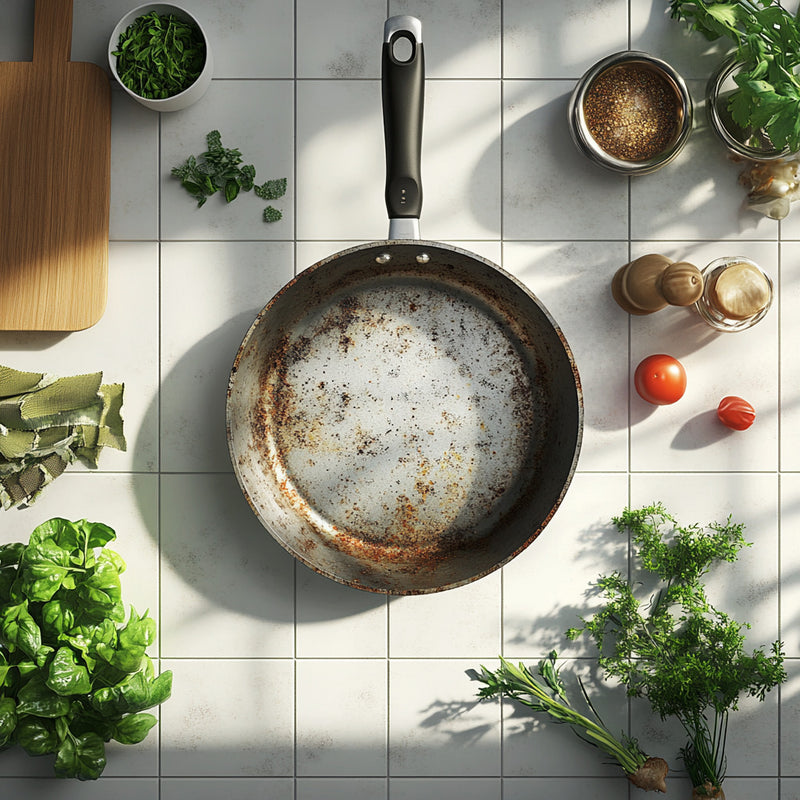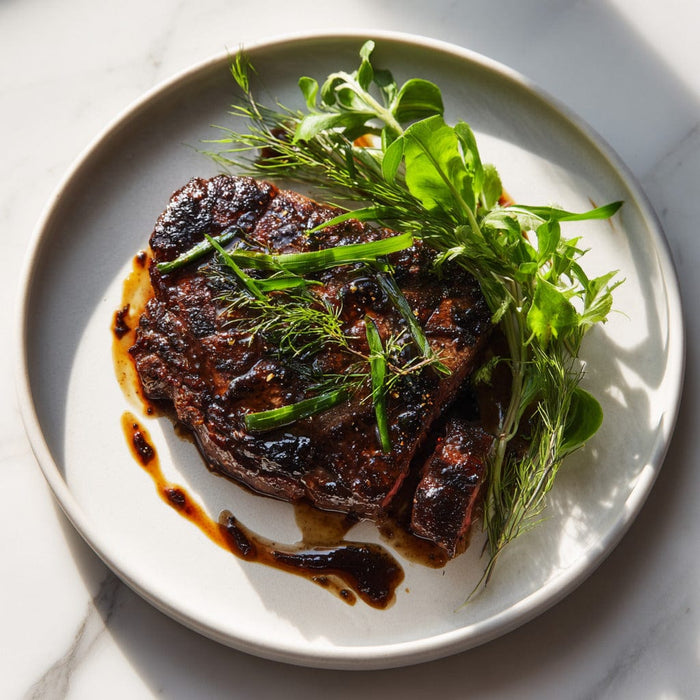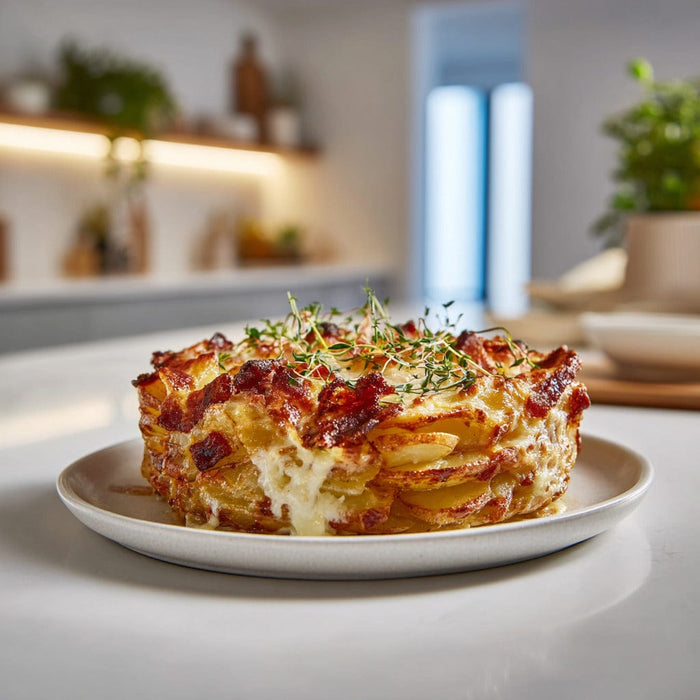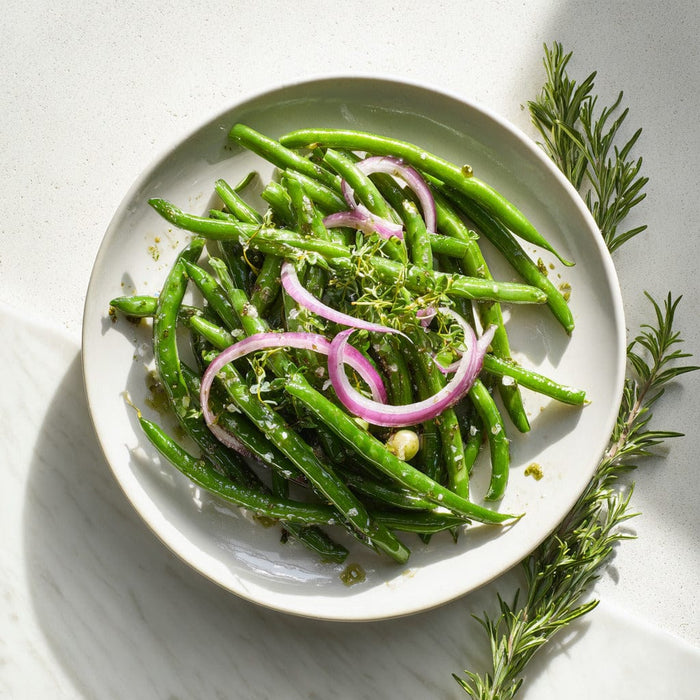
Is It Safe to Use Scratched Nonstick Pans? Here’s What Experts Say
Nonstick pans are a kitchen staple, making it easier to cook delicate foods like eggs, pancakes, and grilled cheese without them sticking to the surface. However, over time, these pans can become scratched or chipped. This raises concerns about whether scratched nonstick cookware is still safe to use. Experts weigh in on the potential risks and provide guidance on when to replace your pans.
Key Takeaways
- Scratched nonstick pans may release microplastics and harmful chemicals into your food.
- Overheating nonstick pans beyond 500°F can degrade their coating and release toxic fumes.
- If food starts sticking to your pan, or there are visible scratches or chips, it's time to replace it.
Understanding Nonstick Pans
Most nonstick pans are coated with PFAS (per- and polyfluoroalkyl substances)—also known as “forever chemicals” because they take a long time to break down. One common PFAS is PTFE (polytetrafluoroethylene), which is used in Teflon cookware.
Are PFAS Chemicals Harmful?
- In 2006, the Environmental Protection Agency (EPA) partnered with eight major companies to phase out PFOA (perfluorooctanoic acid) by 2015 due to concerns over its long-term health and environmental effects.
- While many new pans claim to be PFOA- or PFOS-free, this doesn’t necessarily mean they are completely safe. According to Katie Pelch, a scientist at the Natural Resources Defense Council (NRDC), consumers should also avoid pans containing PTFE or anything labeled with ‘fluoro’ since they likely contain PFAS.
Potential Risks of Cooking with Nonstick Pans
1. Overheating Nonstick Pans
Heating an empty nonstick pan can release toxic gases that are harmful, especially to birds—hence the term "canaries in the kitchen."
The CDC and EPA note that exposure to PFAS may contribute to health issues, including liver disease, high blood pressure, and even some cancers.
Most nonstick cookware should not be heated past 500°F to avoid releasing fumes that can cause flu-like symptoms, known as “polymer fume fever.”
2. Using Scratched Nonstick Pans
Scratched, worn-out pans can release thousands to millions of microplastics and nanoplastics into your food, according to a 2022 study.
If your pan has noticeable scratches, chips, or food starts sticking, it is no longer safe to use.
Older pans (pre-2015) with PFAS-based coatings should be replaced immediately, as they may contain chemicals that are now banned due to safety concerns.
How to Protect Your Nonstick Pans
Since nonstick pans don’t last forever, here are some tips to prolong their lifespan:
- Hand wash them with a soft sponge instead of a dishwasher to minimize scratching.
- Use wooden, silicone, or rubber utensils instead of metal spatulas or tongs.
- When storing, place a cloth towel between stacked pans to prevent surface damage.
Safer Alternatives to Nonstick Pans
If you're looking for a non-toxic option, consider these alternatives:
- Cast Iron: Properly seasoned, it has a natural nonstick surface.
- Stainless Steel: Requires a bit more oil but is durable and free from toxic chemicals.
- Carbon Steel: Similar to cast iron but lighter, excellent for high-heat cooking.
- Nonstick Ceramic-Coated Pans: Free from PFAS chemicals, but ensure you buy high-quality brands that don't degrade quickly.
Cooking Tip: With nonstick pans, food won’t stick even if it's placed before the surface is hot. With cast iron or stainless steel, preheating is key—it seals the surface, preventing food from sticking.
Final Verdict: Should You Keep Using Scratched Nonstick Pans?
If your nonstick pan has scratches, chips, or discoloration, it’s time to replace it.
Avoid overheating your pan beyond 500°F to prevent harmful fumes.
Consider switching to safer alternatives like cast iron, stainless steel, or nonstick ceramic-coated pans.
Some chefs, like Whitney Linsenmeyer, PhD, RD, LD, from Saint Louis University, still use nonstick pans but replace them when they become scratched. “I don’t expect them to last forever, but they remain a staple in my kitchen,” she says.
So, while nonstick pans offer convenience, safety should always be the top priority. If your nonstick pan is damaged, it’s best to invest in a new one or switch to a safer cookware option.
Related Reads
- 📖 How to Properly Clean a Cast Iron Skillet
- 📖 Is It Safe to Eat Sprouted Potatoes?
- 📖 Understanding White Stripes in Chicken Breasts
Would you continue using scratched nonstick pans, or are you switching to a safer cooking alternative? Let us know in the comments! 🍳




